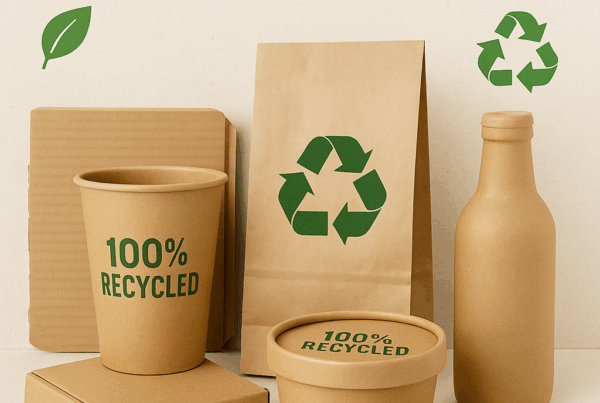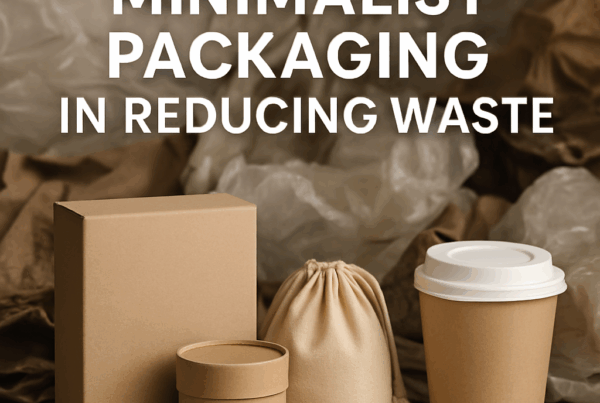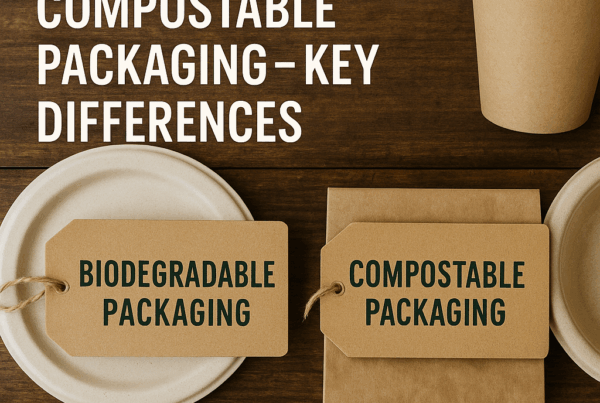Why Plastic-Free Packaging Is the Future
As e-commerce continues its rapid rise, so does its environmental impact—particularly from plastic packaging. Consumers and brands alike are turning to plastic-free packaging to reduce waste, meet sustainability goals, and align with global environmental standards.
In this article, we explore the future of plastic-free packaging in e-commerce—what’s driving the change, the materials leading the way, and how businesses can adapt.
Why E-Commerce Must Ditch Plastic
1. Environmental Pressure
Plastic pollution is one of the most pressing environmental issues today. Traditional e-commerce packaging—bubble wrap, poly mailers, and plastic tape—often ends up in landfills or oceans.
2. Consumer Demand
A growing number of eco-conscious consumers are actively choosing brands that prioritize sustainability. According to a NielsenIQ survey, 73% of global consumers would change their consumption habits to reduce environmental impact.
3. Regulatory Changes
Governments are tightening regulations. Countries like the UK and Australia have introduced bans on single-use plastics. The EU’s Green Deal and extended producer responsibility (EPR) laws are making plastic-free alternatives not just desirable, but essential.
Sustainable Alternatives to Plastic Packaging
1. Paper-Based Mailers
Recyclable and compostable, these are great substitutes for poly mailers. Kraft paper mailers with water-based inks are increasingly popular.
2. Mushroom Packaging
Made from mycelium and agricultural waste, this material is biodegradable and durable—ideal for protecting fragile items.
3. Cornstarch and PLA Packaging
Plant-based and industrially compostable, these materials are suitable for loose fill or wrap.
4. Seaweed Packaging
Innovative companies are developing seaweed-based films that dissolve in water and leave no trace.
5. Reusable Packaging Models
Brands like RePack and Loop offer returnable, refillable packaging—cutting waste and building customer loyalty.
How Brands Are Embracing Plastic-Free Packaging
1. Amazon’s Plastic-Free Trial
In 2023, Amazon began piloting paper-based and recyclable materials in several markets. Their “Frustration-Free Packaging” initiative aims to eliminate plastic where possible.
2. ASOS and H&M
These fashion retailers have introduced biodegradable garment bags and switched to FSC-certified mailers.
3. Small Businesses Leading the Way
Independent e-commerce brands are often the first to adopt innovative solutions, using recycled cardboard, plant-based inks, and plastic-free adhesives.
Benefits of Going Plastic-Free in E-Commerce
-
Brand Loyalty: Sustainability builds trust and long-term customer relationships.
-
Cost Savings: Lightweight alternatives reduce shipping costs.
-
Compliance: Future-proofing your packaging helps you stay ahead of regulation.
-
Better Unboxing Experience: Eco-friendly packaging adds to customer delight and shareability on social media.
Why it works
-Engages customers in a memorable way.
-Encourages longer interaction time with the brand.
Challenges and How to Overcome Them
1. Cost
Eco-packaging can be more expensive upfront. Solution: Bulk purchases and supplier partnerships can reduce costs over time.
2. Availability
Sourcing the right materials may be difficult. Solution: Work with local sustainable suppliers to ensure reliable stock and lower carbon footprint.
3. Education
Consumers may not know how to dispose of new materials. Solution: Include clear instructions on recycling or composting with every order.
What the Future Holds
Plastic-free packaging will become the industry norm rather than the exception. Here’s what’s coming next:
-
Smart Sustainable Materials: QR-coded compostable materials with tracking info.
-
Biotech Innovation: Algae, hemp, and biofilms that outperform traditional plastics.
-
Automation: AI-driven packaging that reduces material usage and waste.
How Your Brand Can Transition to Plastic-Free Packaging
1. Audit Your Current Packaging
Understand how much plastic you use, where, and why.
2. Research Alternatives
Find materials that match your product needs while being eco-friendly.
3. Partner with Sustainable Suppliers
Look for certifications like FSC, B Corp, and Cradle to Cradle.
4. Educate Your Customers
Add QR codes or inserts with disposal instructions, material sourcing, and your sustainability story.
5. Start Small, Scale Fast
Pilot with a few products or packages, measure results, then scale up.
FAQs About Plastic-Free E-Commerce Packaging
What is plastic-free packaging?
Packaging that avoids the use of synthetic plastic materials, instead opting for compostable, recyclable, or reusable alternatives.
Is plastic-free packaging more expensive?
Initially, yes. However, long-term savings and brand value often outweigh the costs.
Can plastic-free packaging protect fragile items?
Absolutely. Materials like mushroom packaging, honeycomb paper wrap, and molded pulp provide strong protection.
Embracing the Shift
The shift toward plastic-free packaging in e-commerce isn’t just a trend—it’s a necessity. By adopting sustainable alternatives today, businesses can future-proof their operations, meet customer expectations, and contribute to a cleaner planet.
The future is clear: plastic-free is the new premium in online retail. Brands that act now will not only lead—they’ll thrive.
Ready to Switch to Non Plastic Packaging Solution?
Let us help you achieve this goal. Contact our sustainable design experts →


